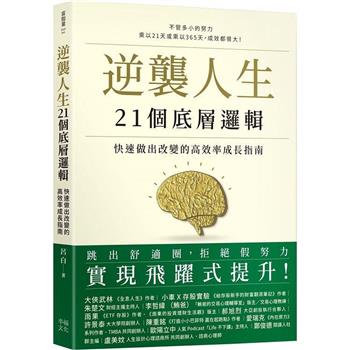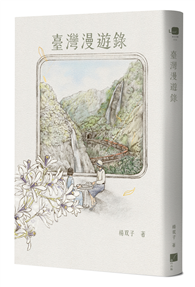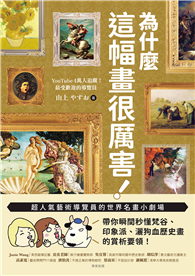The reason for exploring Taiwanese literature from an island perspective can be found in the large number of Taiwan’s surrounding islands. In the planning of this volume, we have chosen to introduce the works of thirteen writers. When necessary, we will mention other works depending on the situation. However, due to limited space, the size of the text samples is restricted, so naturally it is impossible to cover everything. Generally speaking then, the purpose of this volume is to regard the texts of Taiwanese literature as reflections of local island perspectives in the hope of demonstrating the significance of Taiwan’s experience to island researchers around the world.
從「島嶼」視角探討台灣文學,本質上係來自於台灣及其周遭島嶼數量可觀。面對為數可觀的島嶼,究竟要如何進行觀察?取徑現有島嶼或群島研究,如曹永和「台灣島史」及格里桑、郝歐法「群島」觀點探討的島嶼和島嶼之間的連結脈絡。大抵,本次專輯策畫,主要是介紹13位作家作品,偶況言及其他作品旨趣是將台灣文學的文本書寫,視為本地島嶼視線的折射,期盼能從中向世界的島嶼研究者展示台灣經驗的意義。
| FindBook |
有 6 項符合
台灣文學英譯叢刊(No. 52):台灣島嶼視線專輯的圖書 |
 |
台灣文學英譯叢刊(No. 52):台灣島嶼視線專輯 出版社:國立臺灣大學出版中心 出版日期:2024-08-01 語言:繁體中文 規格:普通級/ 初版 |
| 圖書選購 |
| 型式 | 價格 | 供應商 | 所屬目錄 | 電子書 |
$ 419 |
華文文學研究 |
$ 466 |
中文書 |
$ 477 |
華文文學研究 |
$ 477 |
文學作品 |
$ 477 |
教育學習 |
$ 504 |
大學出版品 |
|---|
| 圖書館借閱 |
| 國家圖書館 | 全國圖書書目資訊網 | 國立公共資訊圖書館 | 電子書服務平台 | MetaCat 跨館整合查詢 |
| 臺北市立圖書館 | 新北市立圖書館 | 基隆市公共圖書館 | 桃園市立圖書館 | 新竹縣公共圖書館 |
| 苗栗縣立圖書館 | 臺中市立圖書館 | 彰化縣公共圖書館 | 南投縣文化局 | 雲林縣公共圖書館 |
| 嘉義縣圖書館 | 臺南市立圖書館 | 高雄市立圖書館 | 屏東縣公共圖書館 | 宜蘭縣公共圖書館 |
| 花蓮縣文化局 | 臺東縣文化處 |
|
|
圖書介紹 - 資料來源:博客來 評分:
圖書名稱:台灣文學英譯叢刊(No. 52):台灣島嶼視線專輯
內容簡介
作者介紹
編者簡介
Kuo-ch'ing Tu(杜國清)
Kuo-ch'ing Tu, born in Taichung, Taiwan. His research interests include Chinese literature, Chinese poetics and literary theories, comparative literature East and West, and world literatures of Chinese (Shi-Hua wenxue). He is the author of numerous books of poetry in Chinese, as well as translator of English, Japanese, and French works into Chinese.
Terence Russell(羅德仁)
Terence Russell is Senior Scholar in the Asian Studies Center at the University of Manitoba. He has an interest in contemporary literature in Chinese, especially the literature of Taiwan's Indigenous people. Dr. Russell has been a regular contributor to Taiwan Literature: English Translation Series, and was the guest editor of Issue 24 on Taiwan Indigenous myths and oral literature.
Guest Editor
Huang Mei-e received her PhD from the Institute of Chinese Literature, Fu Jen Catholic University. She is currently a professor at the Institute of Taiwanese Literature at National Taiwan University. She has served as the director of the Institute of Taiwanese Literature at National Taiwan University and the chairman of the Taiwan Literature Society.
Kuo-ch'ing Tu(杜國清)
Kuo-ch'ing Tu, born in Taichung, Taiwan. His research interests include Chinese literature, Chinese poetics and literary theories, comparative literature East and West, and world literatures of Chinese (Shi-Hua wenxue). He is the author of numerous books of poetry in Chinese, as well as translator of English, Japanese, and French works into Chinese.
Terence Russell(羅德仁)
Terence Russell is Senior Scholar in the Asian Studies Center at the University of Manitoba. He has an interest in contemporary literature in Chinese, especially the literature of Taiwan's Indigenous people. Dr. Russell has been a regular contributor to Taiwan Literature: English Translation Series, and was the guest editor of Issue 24 on Taiwan Indigenous myths and oral literature.
Guest Editor
Huang Mei-e received her PhD from the Institute of Chinese Literature, Fu Jen Catholic University. She is currently a professor at the Institute of Taiwanese Literature at National Taiwan University. She has served as the director of the Institute of Taiwanese Literature at National Taiwan University and the chairman of the Taiwan Literature Society.
目錄
Foreword to the Special Issue on Taiwan’s Island Vision / Kuo-ch’ing Tu
〈台灣島嶼視線專輯〉卷頭語 / 杜國清
The View from the Islands: New Topography and New Discourse in Taiwan Literature / Huang Mei-e
島嶼視線:台灣文學的新風景與新論域 / 黃美娥
Poems
Beautiful Island 美麗島 / Yang Huan
Formosa 福爾摩沙 / Liu Ka-shiang
Nation 國家 / Lee Min Yung
Taiwan’s Tail 台灣尾 / Kuo-ch’ing Tu
Island Song—For the Children of Taiwan 島嶼之歌-給台灣的孩子 / Chen Li
Afterword—At the Island’s Edge 跋-在島嶼邊緣 / Chen Li
Prose
The Flying Fish and the Lily 飛魚百合 / Liao Hung-chi
Sirenum Formosa 婆娑之島 / Ping Lu
Legend of the Isles 島的傳說 / Horace Ho
The Face of the Moon 月亮的臉 / Horace Ho
The Sweet Potato King 蕃薯王 / Yang Shu-ching
Spring on a Desolate Island 荒島之春 / Huang K’ochuan
Fog 霧 / Wu Chunyao
Auntie Bao 寶姨 / Liu Hung-wen
Reflections 回首 / Hao Yu-hsiang
Island Inn 逆旅 / Hao Yu-hsiang
The Big Island and the Small Island 大島與小島 / Syaman Rapongan
Searching for the Code of the Islands 尋覓島嶼符號 / Syaman Rapongan
If I Were There如果我在那裡 / Wu Chunyao
The Moving Island 移動的島 / Huang Chong-kai
About the Editors
About the Translators
About Subscriptions
〈台灣島嶼視線專輯〉卷頭語 / 杜國清
The View from the Islands: New Topography and New Discourse in Taiwan Literature / Huang Mei-e
島嶼視線:台灣文學的新風景與新論域 / 黃美娥
Poems
Beautiful Island 美麗島 / Yang Huan
Formosa 福爾摩沙 / Liu Ka-shiang
Nation 國家 / Lee Min Yung
Taiwan’s Tail 台灣尾 / Kuo-ch’ing Tu
Island Song—For the Children of Taiwan 島嶼之歌-給台灣的孩子 / Chen Li
Afterword—At the Island’s Edge 跋-在島嶼邊緣 / Chen Li
Prose
The Flying Fish and the Lily 飛魚百合 / Liao Hung-chi
Sirenum Formosa 婆娑之島 / Ping Lu
Legend of the Isles 島的傳說 / Horace Ho
The Face of the Moon 月亮的臉 / Horace Ho
The Sweet Potato King 蕃薯王 / Yang Shu-ching
Spring on a Desolate Island 荒島之春 / Huang K’ochuan
Fog 霧 / Wu Chunyao
Auntie Bao 寶姨 / Liu Hung-wen
Reflections 回首 / Hao Yu-hsiang
Island Inn 逆旅 / Hao Yu-hsiang
The Big Island and the Small Island 大島與小島 / Syaman Rapongan
Searching for the Code of the Islands 尋覓島嶼符號 / Syaman Rapongan
If I Were There如果我在那裡 / Wu Chunyao
The Moving Island 移動的島 / Huang Chong-kai
About the Editors
About the Translators
About Subscriptions
序
卷頭語
「台灣島嶼視線專輯專輯」卷頭語
杜國清(美國聖塔芭芭拉加州大學東亞語言文化研究系榮譽教授)
台灣的地理位置,位於亞洲東南方,西邊與中國大陸隔著台灣海峽,東界太平洋,南濱巴士海峽與菲律賓相望,北接東海,東北與琉球群島相接。台灣總面積為36,188平方公里,南北長394公里,山地、丘陵約占全島總面積的三分之二。地形南北狹長,地勢東高西低,中央山脈南北縱貫;東岸高山陡峭,西岸以丘陵、盆地、台地、平原為主。在地圖上,南北直立有如蕃薯,從東西方向觀之,有如鯨魚悠游海上。在文學作品上,蕃薯和鯨魚往往作為象徵台灣的符碼,加以描述。
自東西開通以來,與周邊區域南北來往,台灣是海路必經的要道。,台灣的住民歷經三次的移民潮,足以證明四面環海的台灣島,向來就是一個開放的移民社會,具有明顯的島國性格,而與大陸文化迥然不同。探討台灣人的海島性格,進而闡明台灣文學與島嶼文化的特色,可以突顯在全球化視野中台灣存在的主體性。這是一個值得深入探討的課題。《叢刊》這一專輯選譯的作品,抛磚引玉,希望能為台灣文學的國際研究,提供一個新的視角:以台灣的島嶼視缐,探照台灣文學與島嶼文化的獨特性。
本叢刊一向强調台灣文學的主體性,乃是建立在台灣人的主體意識的自覺。台灣人主體意識發展的文化背景與移民社會的形成變遷,從歷史的角度加以觀察,一如前述,與中國大陸的關係亦無可諱言。在〈台灣島嶼視缐〉這一專輯,我們換從地理的角度,以台灣島嶼的視缐,選譯具有島嶼意識的作品加以觀察。這一島嶼視缐的構想,突顯台灣的地理特點,希望能為台灣文學研究提供新風景和新論域。黃美娥教授在導論中指出,以「島嶼」視角重探台灣文學,是受到台灣歷史學家曹永和教授(Ts’ao Yung-ho,1920-2014)所倡議的「台灣島史觀」的啓發,特別是以島嶼研究作為方法論,標舉島嶼的地理特性,以海洋為中介,而與世界保持交往和聯繫的觀點。
黃教授的島嶼視缐,在選文上,不限於台灣本島,還包括外島澎湖、蘭嶼、金門和馬祖,基本上是根據中華民國的政治版圖,具有反映現實疆域的意義,也展現台灣及其外島的島嶼意識。導論中進而引述法國詩人哲學家愛德華.格里桑(Edouard Glissant,1928-2011)的島嶼理論。建立在「群島」(archipel)思想與「關係詩學」(Poetique de la relation)的概念基礎上,格理桑倡議將大陸文化「群島化」,將文學空間構建在島嶼文化關係上,突顯不同文化之間的混雜、交應、融合。關於島嶼和群島問題,導論也引述另一位太平洋島嶼學者郝歐法(Epeli Hau’ofa,1939-2009)的理論,以「島嶼之洋」(a sea of islands)概念,取代「遠洋之島」(islands in a far sea)的主張。要而言之,三位學者對台灣的島嶼視缐具有共同和交集的地方,亦即,將台灣島放置在國際架構中,將海洋當作島嶼和外界連結的中介,透過台灣四周的海洋,將視野伸展到世界全球,展望台灣文學與文化研究的前景。
這一宏觀的研究視野,在文化研究理論上言之成理,令人想起台灣原住民與南島語系島嶼的史前關係。可是歷史的發展並非根據理論。如果聚焦在文學的研究上,不見得有實際的成果,理由是:文學研究必須以文學作品的存在為前提。沒有作品,哪來文學研究。台灣文學的島嶼視缐,必須有優越作品的支撐。本叢刊這一專輯,為此打開一個望海的窗戶,有待更多的台灣作家繼續創作具有台灣島嶼特色的作品;「從群島的一個島漫步到另一個島」,突破中心與邊緣的地理限制、越過國境、通過大洋,走向世界。這一視野對於面臨全球化的台灣,可以借鏡突顯台灣的「島嶼性」,展示與世界文化交流互動影響的無限可能。
Foreword
Foreword to the Special Issue on Taiwan's Island Vision
Kuo-ch'ing Tu
Geographically, Taiwan is located in southeast Asia, separated from mainland China by the Taiwan Strait to the west while the Pacific Ocean lies to the east. To the south, the Bashi Strait runs between Taiwan and the Philippines, and to the north is the East China Sea. The Ryukyu Islands are situated to the northeast. Taiwan’s total area is 36,188 square kilometers, with a length of 394 kilometers from north to south, mountains and hills accounting for about two-thirds of the total area. The island is long and narrow from north to south, with a topography that is high in the east and low in the west, as the central mountain range runs from north to south. The east coast has steep mountains and the west coast is dominated by hills, basins, plateaus, and plains. On a map, Taiwan looks like a sweet potato standing upright from north to south. Viewed from the east-west direction, it looks like a whale swimming leisurely in the sea. In literary works, sweet potatoes and whales are often used as symbols of Taiwan.
Since the opening of connections between the East and the West, Taiwan has been part of the important sea route that must be passed through when traveling north and south to the surrounding lands. Taiwan is separated from mainland China by just a narrow strip of water. The Taiwan Strait is about 300 kilometers long from north to south, with an average width of 180 kilometers and about 130 kilometers at its narrowest point. Historically, Taiwan and China have had a shifting, difficult relationship, which has been a focus of research in Taiwan studies.
In July of 2003, this journal provided an overview of the historical background of Taiwanese literature in the special issue“Taiwan Literature and History” (No. 13). To put it simply, in addition to the Indigenous peoples who have lived in Taiwan for six to seven thousand years, the residents of Taiwan are mainly Han (ethnic Chinese) people who have immigrated from mainland China since the late Ming and early Qing Dynasties. It is generally believed that Taiwan first entered the world’s field of vision when Portuguese sailors suddenly saw it during a northward trade voyage in 1544 and exclaimed, “Ilha Formosa!” (Beautiful Island). This was later followed by the arrival of Spanish and Dutch merchants, after which Taiwan served as a base for colonial trade operations.The Spanish controlled northern Taiwan for sixteen years (1626–1642), while the Dutch first occupied southern Taiwan before moving north to expel the Spanish and occupy northern Taiwan as well, ruling for thirty-eight years. Dutch colonial rule (1624–1662) can be considered Taiwan’s first experience of foreign power.
At the end of the Ming Dynasty and the beginning of the Qing Dynasty, Zheng Chenggong expelled the Dutch and established Taiwan as a base to fight against the Qing Dynasty in his effort to restore the Ming. In 1662, Zheng Chenggong died, and his son Zheng Jing succeeded to the throne, styling himself the “King of Dongning.” This can be said to be the first and only dynasty established in Taiwan by the Han people in the history of Taiwan. This Zheng dynasty comprised three rulers and lasted for twenty-one years (1662–1683). In 1683 (the twenty-second year of the Qing Emperor Kangxi’s reign), Taiwan was incorporated into the territory of the Qing Dynasty. After the Sino-Japanese War in 1895, the defeated Qing government ceded Taiwan to Japan, after which Taiwan became a Japanese colony for fifty years until 1945.
With his invasion of Taiwan in the mid-17th century, Zheng Chenggong brought tens of thousands of troops and dependents, as well as a large number of Han people, including Hokkien and Hakkas, to Taiwan. This represented the first phase of Han immigration to the island. During the Japanese colonial period, these Han people were generally called “Taiwanese,” in contrast to the Japanese colonizers. Aside from Indigenous peoples, Taiwan is a society of immigrants. Most of the early Hokkien and Hakka people came from Fujian and Guangdong in mainland China. Due to Taiwan’s geographical location, so close to mainland China, there was constant exchange between the two sides of the Taiwan Strait in early times and no significant differences in living customs, language, and culture. However, during the fifty years of Japanese colonial rule, the Taiwanese people participated in Japan’s modernization process and also created a history of anti-colonial struggle, events not experienced by people of the same culture and ethnicity in mainland China. This is a difference that cannot be ignored when discussing the relationship between Taiwan and China.
The second wave of immigration to Taiwan occurred in 1949. With the retreat of the Nationalist government from the mainland, about 1.2 million soldiers and civilians representing ethnic groups from other provinces of China fled to Taiwan. These mainlanders included ethnic minorities, which further contributed to the ethnic and lifestyle diversity of Taiwan’s population, enriching Taiwanese society. In this way also, Taiwan differs from mainland China. After two or three generations, these people from other provinces left the military villages where the Nationalist government had settled them and began to speak Taiwanese, gradually integrating into Taiwanese society and assuming Taiwanese identity.
The third immigration wave occurred after the lifting of martial law in 1987. With political democratization and social opening, Taiwan began to accommodate new immigrants, mostly from Southeast Asia, to meet the economy’s need for labor. Through intermarriage and community participation, these new immigrants broke through language barriers and gradually integrated into Taiwanese society. They began to distinguish themselves in various fields and communities, injecting new vitality into Taiwan’s immigrant society. According to statistics, at the end of February 2023 the population of new immigrants in Taiwan was 579,861, close to that of Indigenous peoples.
These three waves of immigration are ample proof that the island of Taiwan, surrounded by the sea, has always been an open immigrant society with an obvious island character, which is completely different from mainland culture. Exploring the island character of Taiwanese people and elucidating the characteristics this island culture has contributed to Taiwanese literature, adding nuance to our understanding of Taiwanese subjectivity in the global perspective. This is a subject worth exploring in depth. The works selected and translated in this special issue of the Series serve as a starting point from which we hope to provide new perspectives for the international study of Taiwanese literature, i.e., using Taiwan’s island perspective to explore the uniqueness of Taiwanese literature and island culture.
This series has always emphasized the subjectivity of Taiwanese literature, which is based on the subjective consciousness of the Taiwanese people. The cultural background to the development of that consciousness, as well as the formation and changes in Taiwan’s immigrant society, can be observed from a historical perspective and, as mentioned above, the relationship with mainland China cannot be denied. In this special issue on “Taiwan’s Island Vision,” we have switched from a historical perspective to the geographical perspective of Taiwan as an island to select and translate works representing island consciousness.
This conception of the island perspective highlights Taiwan’s geographical characteristics and aims to provide a new landscape and a new domain for the study of Taiwanese literature. Professor Huang Mei-e points out in her introduction that the re-exploration of Taiwanese literature from an island perspective was inspired by the “Island History of Taiwan” advocated by Taiwanese historian Ts’ao Yung-ho (1920–2014), who used island studies as a methodology to highlight the geographical characteristics of islands, and the way in which exchanges and connections with the world are facilitated using the ocean as a medium.
In terms of text selection, Professor Huang’s island perspective is not limited to the main island of Taiwan, but also includes the outer islands of Penghu, Orchid Island, Kinmen, and Matsu. It is based on the political territory of the Republic of China and is significant in that it reflects the actual territorial extent of Taiwan and demonstrates the island consciousness of Taiwan and its outer islands. Her introduction further quotes the island theory of French poet and philosopher Édouard Glissant (1928–2011). Based on the concepts of “archipel” (archipelago) and “poétique de la relation” (poetics of relation), Glissant advocated the “archipelagoization” of mainland culture. In this way, literary space is built upon the relationship between island cultures, and the mixing, interaction, and integration of those cultures, as well as highlighting differences. Regarding the issue of islands and archipelagos, the introduction also quotes the theory of another Pacific Island scholar, Epeli Hau’ofa (1939–2009), who replaced the concept of “islands in a far sea” with the idea of “a sea of islands.” In short, when applied to Taiwan’s islands, the three scholars have common and overlapping views. That is, they would place Taiwan in an international framework and see the ocean as an intermediary to connect the islands with the outside world. Through the ocean, Taiwan can extend its horizons to the world at large and look forward to new prospects on Taiwanese literature and cultural research.
As cultural studies theory, this macroscopic research perspective reminds us of the prehistoric relationship between Taiwanese aborigines and other Austronesian island people. But historical development does not proceed according to theory, and if we focus on the study of literary history, we may not achieve practical results. The reason is that literary research must be based on the existence of literary works. Without works, there is no way to study them. The island vision of Taiwanese literature must be supported by works of quality and merit. This issue in our series opens a window on the sea. It is expected that more Taiwanese writers will continue to create works with Taiwanese island characteristics. By “wandering from one island to another in the archipelago,” they may break through the geographical restrictions of center and periphery, cross borders, cross oceans, to join the world. This perspective, highlighting Taiwan’s “island character,” can serve as a reference for Taiwan, which is facing globalization, and demonstrate the infinite possibilities of interaction and exchange with the world’s cultures.
「台灣島嶼視線專輯專輯」卷頭語
杜國清(美國聖塔芭芭拉加州大學東亞語言文化研究系榮譽教授)
台灣的地理位置,位於亞洲東南方,西邊與中國大陸隔著台灣海峽,東界太平洋,南濱巴士海峽與菲律賓相望,北接東海,東北與琉球群島相接。台灣總面積為36,188平方公里,南北長394公里,山地、丘陵約占全島總面積的三分之二。地形南北狹長,地勢東高西低,中央山脈南北縱貫;東岸高山陡峭,西岸以丘陵、盆地、台地、平原為主。在地圖上,南北直立有如蕃薯,從東西方向觀之,有如鯨魚悠游海上。在文學作品上,蕃薯和鯨魚往往作為象徵台灣的符碼,加以描述。
自東西開通以來,與周邊區域南北來往,台灣是海路必經的要道。,台灣的住民歷經三次的移民潮,足以證明四面環海的台灣島,向來就是一個開放的移民社會,具有明顯的島國性格,而與大陸文化迥然不同。探討台灣人的海島性格,進而闡明台灣文學與島嶼文化的特色,可以突顯在全球化視野中台灣存在的主體性。這是一個值得深入探討的課題。《叢刊》這一專輯選譯的作品,抛磚引玉,希望能為台灣文學的國際研究,提供一個新的視角:以台灣的島嶼視缐,探照台灣文學與島嶼文化的獨特性。
本叢刊一向强調台灣文學的主體性,乃是建立在台灣人的主體意識的自覺。台灣人主體意識發展的文化背景與移民社會的形成變遷,從歷史的角度加以觀察,一如前述,與中國大陸的關係亦無可諱言。在〈台灣島嶼視缐〉這一專輯,我們換從地理的角度,以台灣島嶼的視缐,選譯具有島嶼意識的作品加以觀察。這一島嶼視缐的構想,突顯台灣的地理特點,希望能為台灣文學研究提供新風景和新論域。黃美娥教授在導論中指出,以「島嶼」視角重探台灣文學,是受到台灣歷史學家曹永和教授(Ts’ao Yung-ho,1920-2014)所倡議的「台灣島史觀」的啓發,特別是以島嶼研究作為方法論,標舉島嶼的地理特性,以海洋為中介,而與世界保持交往和聯繫的觀點。
黃教授的島嶼視缐,在選文上,不限於台灣本島,還包括外島澎湖、蘭嶼、金門和馬祖,基本上是根據中華民國的政治版圖,具有反映現實疆域的意義,也展現台灣及其外島的島嶼意識。導論中進而引述法國詩人哲學家愛德華.格里桑(Edouard Glissant,1928-2011)的島嶼理論。建立在「群島」(archipel)思想與「關係詩學」(Poetique de la relation)的概念基礎上,格理桑倡議將大陸文化「群島化」,將文學空間構建在島嶼文化關係上,突顯不同文化之間的混雜、交應、融合。關於島嶼和群島問題,導論也引述另一位太平洋島嶼學者郝歐法(Epeli Hau’ofa,1939-2009)的理論,以「島嶼之洋」(a sea of islands)概念,取代「遠洋之島」(islands in a far sea)的主張。要而言之,三位學者對台灣的島嶼視缐具有共同和交集的地方,亦即,將台灣島放置在國際架構中,將海洋當作島嶼和外界連結的中介,透過台灣四周的海洋,將視野伸展到世界全球,展望台灣文學與文化研究的前景。
這一宏觀的研究視野,在文化研究理論上言之成理,令人想起台灣原住民與南島語系島嶼的史前關係。可是歷史的發展並非根據理論。如果聚焦在文學的研究上,不見得有實際的成果,理由是:文學研究必須以文學作品的存在為前提。沒有作品,哪來文學研究。台灣文學的島嶼視缐,必須有優越作品的支撐。本叢刊這一專輯,為此打開一個望海的窗戶,有待更多的台灣作家繼續創作具有台灣島嶼特色的作品;「從群島的一個島漫步到另一個島」,突破中心與邊緣的地理限制、越過國境、通過大洋,走向世界。這一視野對於面臨全球化的台灣,可以借鏡突顯台灣的「島嶼性」,展示與世界文化交流互動影響的無限可能。
Foreword
Foreword to the Special Issue on Taiwan's Island Vision
Kuo-ch'ing Tu
Geographically, Taiwan is located in southeast Asia, separated from mainland China by the Taiwan Strait to the west while the Pacific Ocean lies to the east. To the south, the Bashi Strait runs between Taiwan and the Philippines, and to the north is the East China Sea. The Ryukyu Islands are situated to the northeast. Taiwan’s total area is 36,188 square kilometers, with a length of 394 kilometers from north to south, mountains and hills accounting for about two-thirds of the total area. The island is long and narrow from north to south, with a topography that is high in the east and low in the west, as the central mountain range runs from north to south. The east coast has steep mountains and the west coast is dominated by hills, basins, plateaus, and plains. On a map, Taiwan looks like a sweet potato standing upright from north to south. Viewed from the east-west direction, it looks like a whale swimming leisurely in the sea. In literary works, sweet potatoes and whales are often used as symbols of Taiwan.
Since the opening of connections between the East and the West, Taiwan has been part of the important sea route that must be passed through when traveling north and south to the surrounding lands. Taiwan is separated from mainland China by just a narrow strip of water. The Taiwan Strait is about 300 kilometers long from north to south, with an average width of 180 kilometers and about 130 kilometers at its narrowest point. Historically, Taiwan and China have had a shifting, difficult relationship, which has been a focus of research in Taiwan studies.
In July of 2003, this journal provided an overview of the historical background of Taiwanese literature in the special issue“Taiwan Literature and History” (No. 13). To put it simply, in addition to the Indigenous peoples who have lived in Taiwan for six to seven thousand years, the residents of Taiwan are mainly Han (ethnic Chinese) people who have immigrated from mainland China since the late Ming and early Qing Dynasties. It is generally believed that Taiwan first entered the world’s field of vision when Portuguese sailors suddenly saw it during a northward trade voyage in 1544 and exclaimed, “Ilha Formosa!” (Beautiful Island). This was later followed by the arrival of Spanish and Dutch merchants, after which Taiwan served as a base for colonial trade operations.The Spanish controlled northern Taiwan for sixteen years (1626–1642), while the Dutch first occupied southern Taiwan before moving north to expel the Spanish and occupy northern Taiwan as well, ruling for thirty-eight years. Dutch colonial rule (1624–1662) can be considered Taiwan’s first experience of foreign power.
At the end of the Ming Dynasty and the beginning of the Qing Dynasty, Zheng Chenggong expelled the Dutch and established Taiwan as a base to fight against the Qing Dynasty in his effort to restore the Ming. In 1662, Zheng Chenggong died, and his son Zheng Jing succeeded to the throne, styling himself the “King of Dongning.” This can be said to be the first and only dynasty established in Taiwan by the Han people in the history of Taiwan. This Zheng dynasty comprised three rulers and lasted for twenty-one years (1662–1683). In 1683 (the twenty-second year of the Qing Emperor Kangxi’s reign), Taiwan was incorporated into the territory of the Qing Dynasty. After the Sino-Japanese War in 1895, the defeated Qing government ceded Taiwan to Japan, after which Taiwan became a Japanese colony for fifty years until 1945.
With his invasion of Taiwan in the mid-17th century, Zheng Chenggong brought tens of thousands of troops and dependents, as well as a large number of Han people, including Hokkien and Hakkas, to Taiwan. This represented the first phase of Han immigration to the island. During the Japanese colonial period, these Han people were generally called “Taiwanese,” in contrast to the Japanese colonizers. Aside from Indigenous peoples, Taiwan is a society of immigrants. Most of the early Hokkien and Hakka people came from Fujian and Guangdong in mainland China. Due to Taiwan’s geographical location, so close to mainland China, there was constant exchange between the two sides of the Taiwan Strait in early times and no significant differences in living customs, language, and culture. However, during the fifty years of Japanese colonial rule, the Taiwanese people participated in Japan’s modernization process and also created a history of anti-colonial struggle, events not experienced by people of the same culture and ethnicity in mainland China. This is a difference that cannot be ignored when discussing the relationship between Taiwan and China.
The second wave of immigration to Taiwan occurred in 1949. With the retreat of the Nationalist government from the mainland, about 1.2 million soldiers and civilians representing ethnic groups from other provinces of China fled to Taiwan. These mainlanders included ethnic minorities, which further contributed to the ethnic and lifestyle diversity of Taiwan’s population, enriching Taiwanese society. In this way also, Taiwan differs from mainland China. After two or three generations, these people from other provinces left the military villages where the Nationalist government had settled them and began to speak Taiwanese, gradually integrating into Taiwanese society and assuming Taiwanese identity.
The third immigration wave occurred after the lifting of martial law in 1987. With political democratization and social opening, Taiwan began to accommodate new immigrants, mostly from Southeast Asia, to meet the economy’s need for labor. Through intermarriage and community participation, these new immigrants broke through language barriers and gradually integrated into Taiwanese society. They began to distinguish themselves in various fields and communities, injecting new vitality into Taiwan’s immigrant society. According to statistics, at the end of February 2023 the population of new immigrants in Taiwan was 579,861, close to that of Indigenous peoples.
These three waves of immigration are ample proof that the island of Taiwan, surrounded by the sea, has always been an open immigrant society with an obvious island character, which is completely different from mainland culture. Exploring the island character of Taiwanese people and elucidating the characteristics this island culture has contributed to Taiwanese literature, adding nuance to our understanding of Taiwanese subjectivity in the global perspective. This is a subject worth exploring in depth. The works selected and translated in this special issue of the Series serve as a starting point from which we hope to provide new perspectives for the international study of Taiwanese literature, i.e., using Taiwan’s island perspective to explore the uniqueness of Taiwanese literature and island culture.
This series has always emphasized the subjectivity of Taiwanese literature, which is based on the subjective consciousness of the Taiwanese people. The cultural background to the development of that consciousness, as well as the formation and changes in Taiwan’s immigrant society, can be observed from a historical perspective and, as mentioned above, the relationship with mainland China cannot be denied. In this special issue on “Taiwan’s Island Vision,” we have switched from a historical perspective to the geographical perspective of Taiwan as an island to select and translate works representing island consciousness.
This conception of the island perspective highlights Taiwan’s geographical characteristics and aims to provide a new landscape and a new domain for the study of Taiwanese literature. Professor Huang Mei-e points out in her introduction that the re-exploration of Taiwanese literature from an island perspective was inspired by the “Island History of Taiwan” advocated by Taiwanese historian Ts’ao Yung-ho (1920–2014), who used island studies as a methodology to highlight the geographical characteristics of islands, and the way in which exchanges and connections with the world are facilitated using the ocean as a medium.
In terms of text selection, Professor Huang’s island perspective is not limited to the main island of Taiwan, but also includes the outer islands of Penghu, Orchid Island, Kinmen, and Matsu. It is based on the political territory of the Republic of China and is significant in that it reflects the actual territorial extent of Taiwan and demonstrates the island consciousness of Taiwan and its outer islands. Her introduction further quotes the island theory of French poet and philosopher Édouard Glissant (1928–2011). Based on the concepts of “archipel” (archipelago) and “poétique de la relation” (poetics of relation), Glissant advocated the “archipelagoization” of mainland culture. In this way, literary space is built upon the relationship between island cultures, and the mixing, interaction, and integration of those cultures, as well as highlighting differences. Regarding the issue of islands and archipelagos, the introduction also quotes the theory of another Pacific Island scholar, Epeli Hau’ofa (1939–2009), who replaced the concept of “islands in a far sea” with the idea of “a sea of islands.” In short, when applied to Taiwan’s islands, the three scholars have common and overlapping views. That is, they would place Taiwan in an international framework and see the ocean as an intermediary to connect the islands with the outside world. Through the ocean, Taiwan can extend its horizons to the world at large and look forward to new prospects on Taiwanese literature and cultural research.
As cultural studies theory, this macroscopic research perspective reminds us of the prehistoric relationship between Taiwanese aborigines and other Austronesian island people. But historical development does not proceed according to theory, and if we focus on the study of literary history, we may not achieve practical results. The reason is that literary research must be based on the existence of literary works. Without works, there is no way to study them. The island vision of Taiwanese literature must be supported by works of quality and merit. This issue in our series opens a window on the sea. It is expected that more Taiwanese writers will continue to create works with Taiwanese island characteristics. By “wandering from one island to another in the archipelago,” they may break through the geographical restrictions of center and periphery, cross borders, cross oceans, to join the world. This perspective, highlighting Taiwan’s “island character,” can serve as a reference for Taiwan, which is facing globalization, and demonstrate the infinite possibilities of interaction and exchange with the world’s cultures.
|











